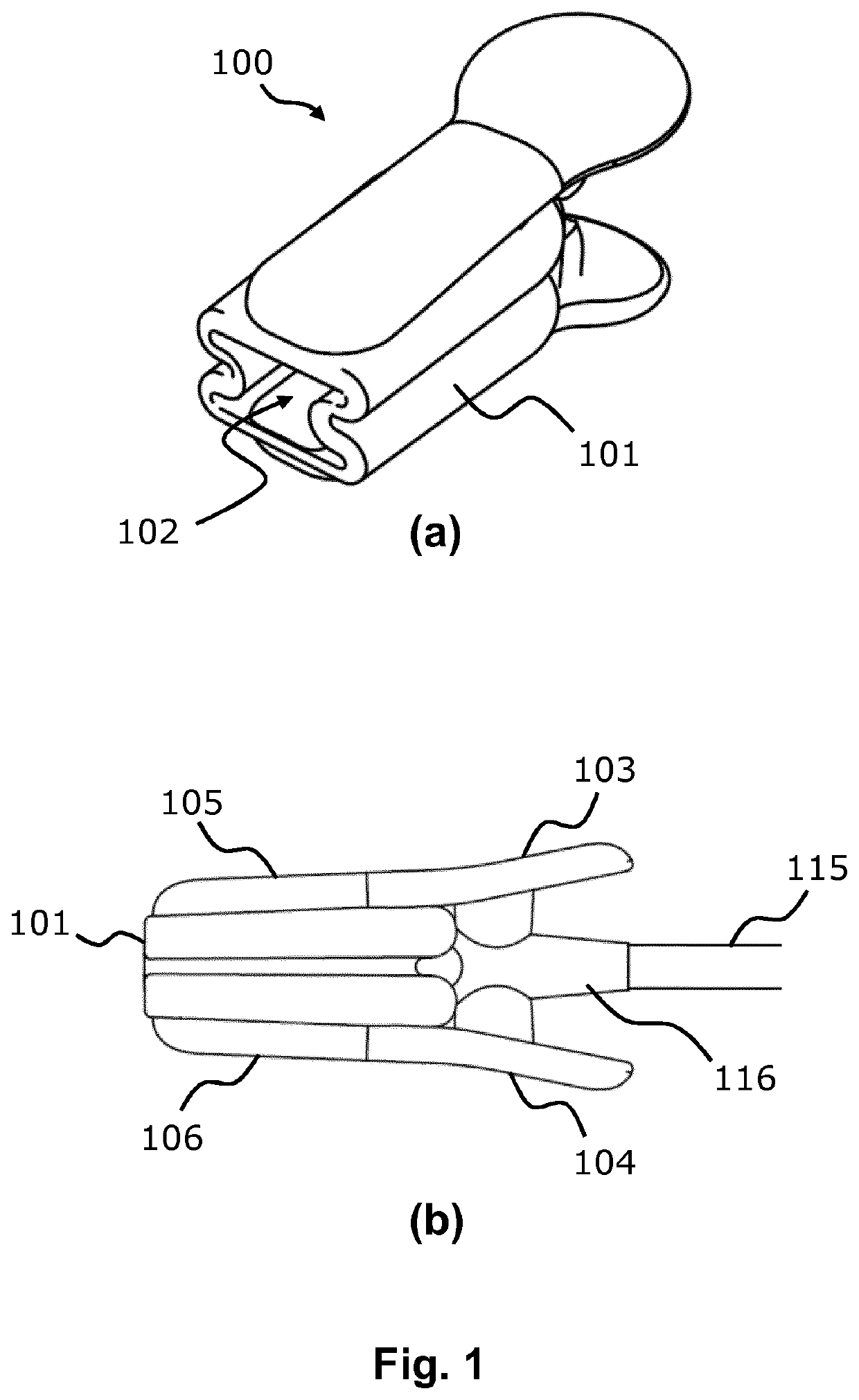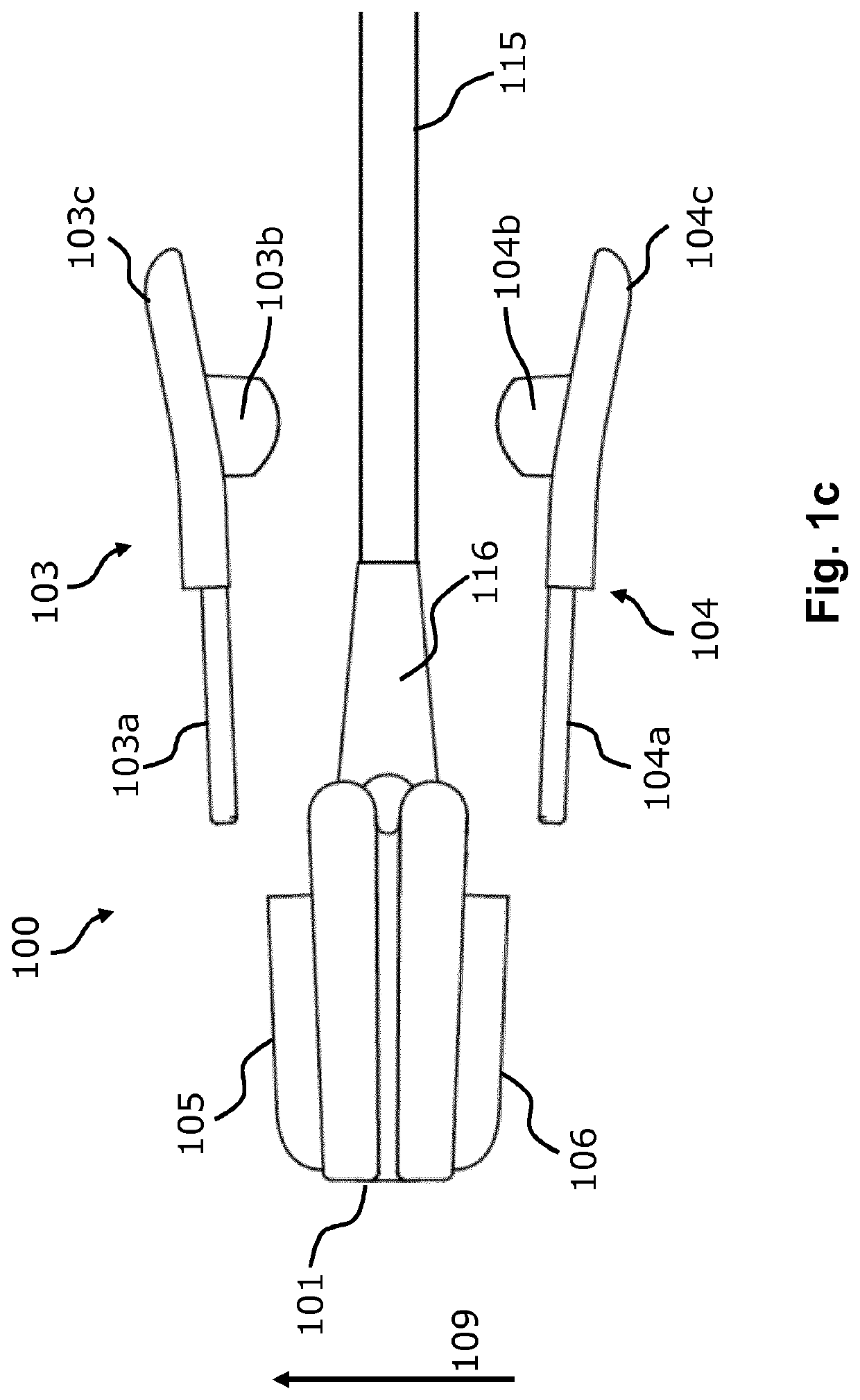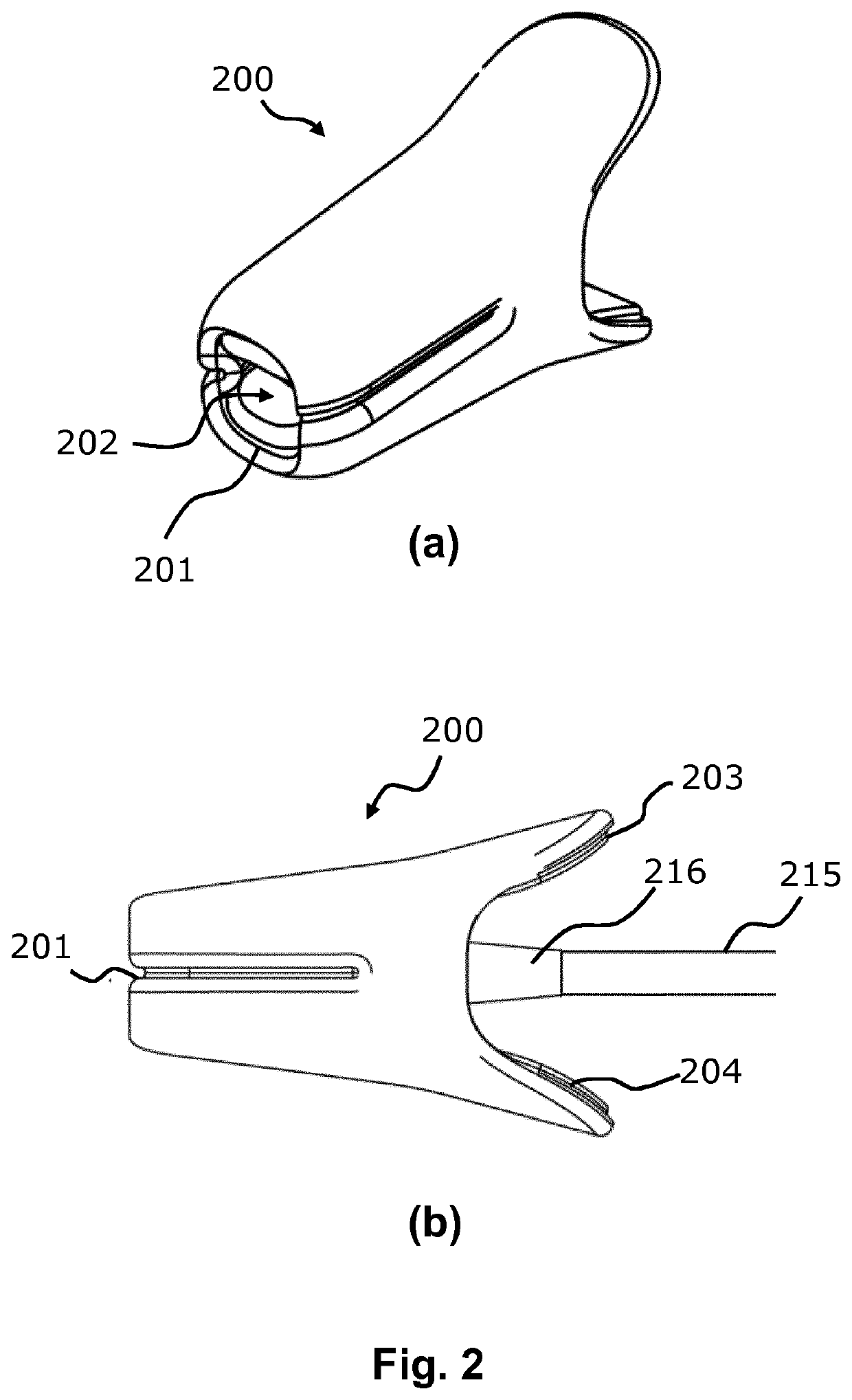Device for measuring a physiological parameter of a human limb and method for manufacturing such device
a technology of physiological parameters and human limbs, applied in the field of human limb physiological parameters measuring devices, can solve the problems of different sizes of infant limbs of different age groups compared to the limbs of adults, and the oximetry probes designed for adults' limbs are poorly adapted to infant limbs, etc., to achieve good mechanical properties, good elasticity, and high temperature resistance.
- Summary
- Abstract
- Description
- Claims
- Application Information
AI Technical Summary
Benefits of technology
Problems solved by technology
Method used
Image
Examples
first embodiment
[0062]FIGS. 1a-c show different views of a device for measuring a physiological parameter of a human limb according to the present invention. In particular, the device 100 comprises a hollow elastic sleeve 101 comprising a cavity 102 that is adapted to enclose the limb, such as a finger of a patient. The cavity 102 extends longitudinally between a distal end and a proximal end and has a closed-loop cross-section.
[0063]In this example, the distal end is the one that appears in front (i.e. on the first plane) in the perspective view of FIG. 1a or in the left in the side view of FIG. 1b. That end is “distal” with respect to the position of the caregiver or medical practitioner that operates the device, because that end is located farther from him or her when holding the device. Said distal end is, at the same time, the end of the cavity 102 of the hollow elastic sleeve closer to the patient, through which the patient's limb is received. On the other hand, the proximal end, although not...
second embodiment
[0069]Referring now to FIGS. 2a and 2b, it is there depicted a device in accordance with the present invention. As in the previous example shown in FIG. 1, the device 200 also comprises a hollow elastic sleeve 201 that includes a cavity 202 having a closed-loop cross-section and that extends longitudinally between a distal end 207 and a proximal end 208. The device 200 also comprises a first and a second arm 203, 204, with each arm comprising a hinge portion 203b, 204b located at an intermediate position of the arm between a coupling portion 203a, 204a and a handle portion 203c, 204c. But, conversely, to the previous example, the hollow elastic sleeve 201 is now overmolded on the first and the second arm 203, 204. This can be better observed in FIG. 4, which presents a cut-out view of the device 200 of FIG. 2 sliced along a plane defined by the longitudinal direction along which the cavity extends and the clamping direction 209 (i.e., a plane parallel to the paper for the side view ...
PUM
 Login to View More
Login to View More Abstract
Description
Claims
Application Information
 Login to View More
Login to View More - R&D
- Intellectual Property
- Life Sciences
- Materials
- Tech Scout
- Unparalleled Data Quality
- Higher Quality Content
- 60% Fewer Hallucinations
Browse by: Latest US Patents, China's latest patents, Technical Efficacy Thesaurus, Application Domain, Technology Topic, Popular Technical Reports.
© 2025 PatSnap. All rights reserved.Legal|Privacy policy|Modern Slavery Act Transparency Statement|Sitemap|About US| Contact US: help@patsnap.com



